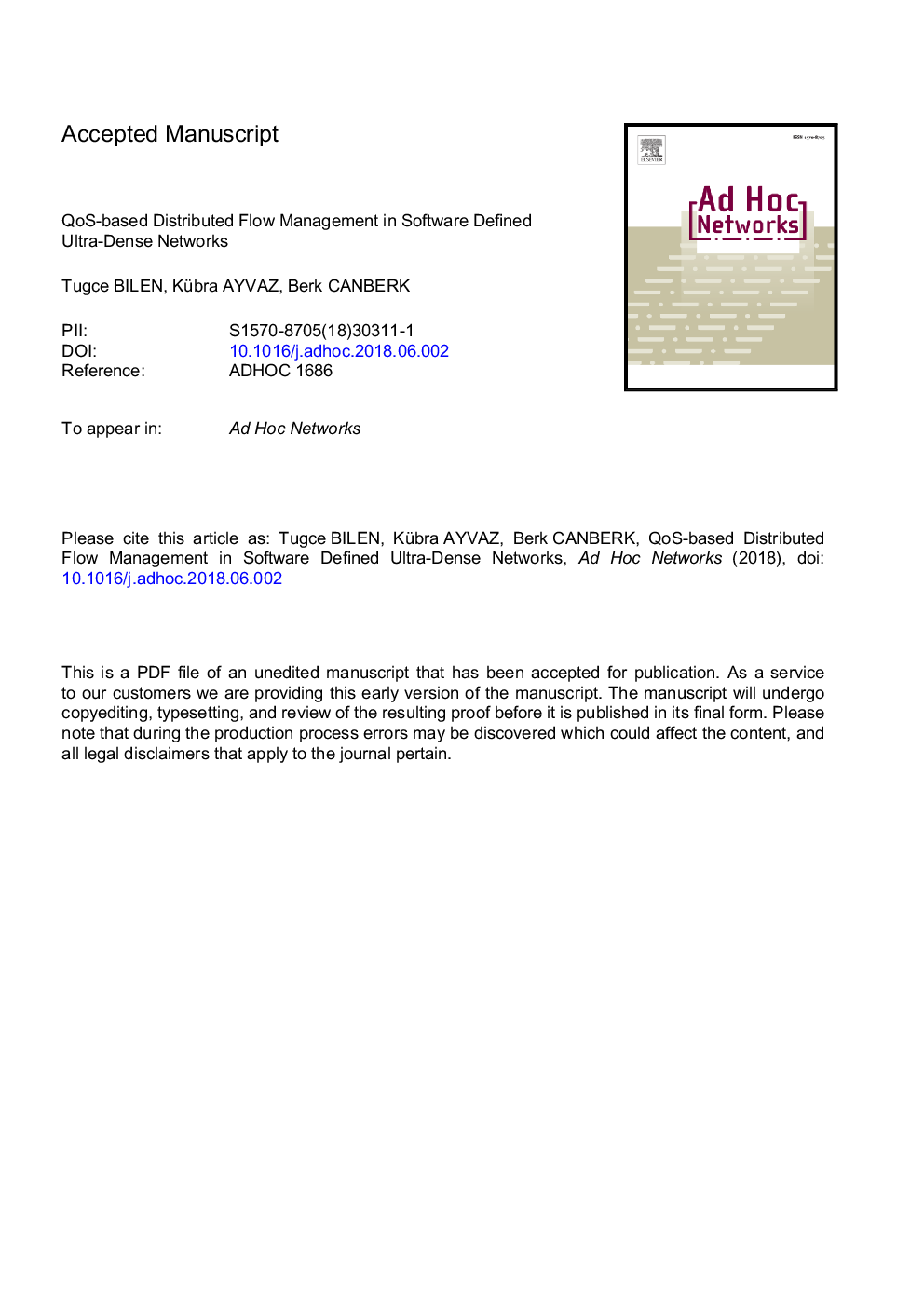| Article ID | Journal | Published Year | Pages | File Type |
|---|---|---|---|---|
| 6878399 | Ad Hoc Networks | 2018 | 14 Pages |
Abstract
Ultra-dense small cell deployment is a promising solution to meet the 1000x throughput improvement desired in next-generation wireless networks. This deployment results in a correspondingly high number of small cells, also increasing the complexity of the architecture. The Software-Defined Networking (SDN) can be used as a solution to ease the management of Ultra-Dense data plane with distributed controllers. However, in a distributed architecture, the load must be balanced among the controllers and an outage in any controller should not damage the management of the network. In order to recover from an outage by considering load distributions, we propose a distributed flow management model in Software-Defined Ultra-Dense Networks based on the queuing theory. In this approach, we model the distributed controllers with different Markovian queuing systems by considering the flow characteristics and outage. Thus, the proposed flow separation module divides the incoming flows of controllers according to the characteristics of mice and elephant during modeling. Correspondingly, incoming mice and elephant flows are modeled by using M/M/1 and MX/M/1 systems with additional M/M/c queue until the detection of the outage. The M/M/c queues are used for outage detection thanks to Erlang-C parameter. On the other hand, the M/M/1 and MX/M/1 systems are used to load estimations of mice and elephant flows. Therefore, the mice and elephant flows of the outage controllers are transferred to the compensatory controllers by considering the estimated load distributions. Thence, the M/M/c queues of the compensatory controllers are converted to the M/MY/1 system to satisfy the massive flow traffic with bulk service. With this method, we are able to decrease the waiting times of mice and elephant flows during the outage by 15% and 11% respectively compared to the conventional distributed controller implementation. Moreover, the packet losses of the controllers during the outage are decreased by 32% compared to the conventional implementation.
Related Topics
Physical Sciences and Engineering
Computer Science
Computer Networks and Communications
Authors
TuÄçe Bilen, Kübra Ayvaz, Berk Canberk,
